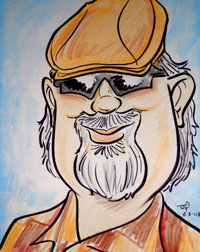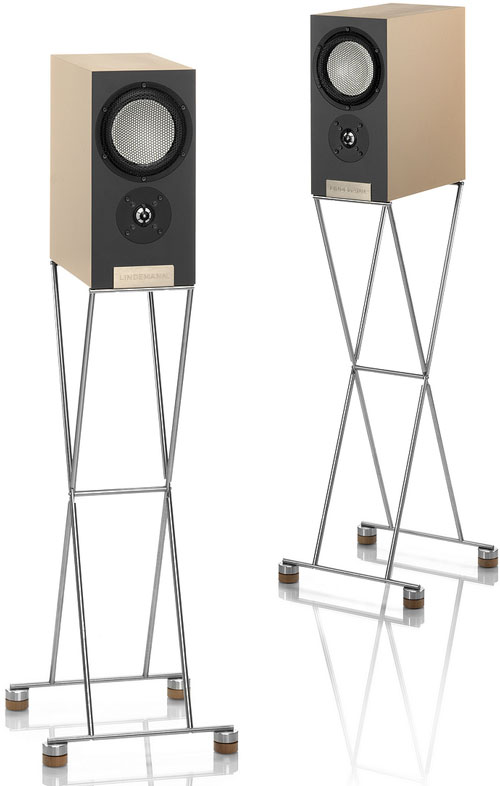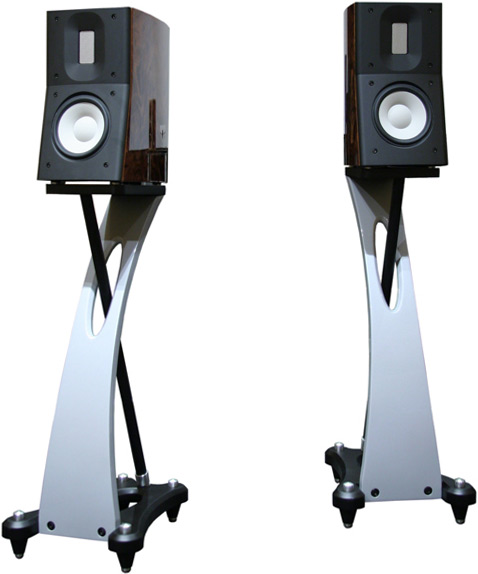
The Spica speakers simply blew my mind. I had heard some speakers that sort of did what we call a palpable soundstage and I had read Harry going on about this phenomena, but the Spicas were my first chance to really hear this for myself. Like many audiophiles of this time period, I became preoccupied with finding speakers that produced this kind of extremely wide and deep soundstage. The sad thing is, we did this often at the expense of dynamic, PRaT, transparency, and tonality. Truth is, there are still many audiophiles and even a few manufacturers who still hold this kind of soundstage as the Holy Grail.
I did not buy the Crosby Spica TC50s, but finally went all out and purchased a pair of Celestion SL700SE. I vertical bi-amped them with a pair of Beard P35s, the best pure class A push-pull tube amps I had heard at the time. The system was completed out with an Audio Research SP-8 and a Mapleknoll turntable. With the speakers set a third out into the room and a third from each sidewall, the soundstage was incredibly wide and deep. It was really something to hear, but after a year or so I begin to found them boring, lacking in transparency, micro-dynamics, and dynamics. They did create one unbelievable soundstage, though.
Well, as a result of the last few years of reviewing I can tell you that small speakers have come a long way in overcoming the weaknesses I mentioned above. Let me share with you how, by talking about the thee most amazing small speakers I have heard in the past 5 years.
Lindemann BL-10 (see Review)
Price: $11,000 a pair
These little wonders are only 13.4 x 11.8 x 6.7 inch (H x D x W) and sit on Lindemann’s specially designed stands that look like they were inspired by metal TV stands. As small as they are, they still use a cabinet inside a cabinet and are as dead as any speaker I know of. Amazingly they are very light at the same time. This flies in the face of both those who prefer high mass, dead-as-possible cabinets and those who use light weight, thin walled cabinets, that resonate with the sound. Lindemann has designed a speaker that seems to be right in the middle of those two design theories: Relatively light cabinets but with very stiff walls.
Lindemann also made a decision to make the best small speaker possible instead of a small speaker that plays full range. This means he did not try to make them play too low, but the resulting speaker is mind blowing. It images like the Celestion or Spicas, and yet they sound very alive. They are wonderfully open with exceptional transparency and amazing scale. Instruments come across with vivid color, realistic scale that totally defies their size. It’s hard to not talk about how good these speakers are for their size, but the truth is they are really good among speakers of any size.
These little wonders have world class dynamics. The only place the dynamics are not world class is in the lowest octaves, which of course are just not there. The upper bass and lower midrange are so alive though that I seldom missed the low bass. The dynamic transients are also really quick.
These speakers surely show how far small stand mounted speakers have come.
Raidho Ayra C1.0 (see Review)
Price: $17,000 a pair with stands
Yes, these are really expensive speakers by any standard, much less speakers this size, but more than any small speakers I have reviewed these sound like full range speakers. They are beautiful speakers with beautiful and impeccable cabinet work. The pair I reviewed was made of burl walnut with many, many coats of lacquer. If you like that look of shiny, deep-lacquered wood, you may find these the most beautiful stand mounted speakers you have ever seen. By the way, the stands look equally beautiful.
Of course, it’s not their looks alone that gets them into this column. It’s their sound. The Ayra C1s set new standards in the ability for a speaker to produce a reach-out-and-touch-someone soundstage. Their inner detail, and imaging was also in the same class as speakers that cost six figures. They had dynamics, scale, and slam that you would be thrilled with from any speaker of any size. These speakers are the essence of modern speakers.
Teresonic Magus A55 with Lowther Alnico 55 Silver Drivers (see Review)
Price: $5,000 a pair
Teresonic makes three models of the Magus: the DX55 at $4,000, the A55 at $5,000, and the Magus XR with the DX65 silver driver at $6,000. They are all good speakers, and with the very best SET amps the Magus XR is one of the best single driver speakers I have heard. Still, my overall favorite is the A55. Its alnico driver has a slightly different taste; it is a little more full-bodied and robust. While the A55 does not go quite as deep as the DX65 in the Magus XR, it has a little fuller mid-bass and midrange. It also has slightly more sparkle in the upper midrange and treble. It is not quite as detailed, fast, nor does it have as much slam as the DX65, but it’s not far behind. What the A55 does have is that magical midrange that allows lesser amps to sound more like SET amps.
The A55s are so alive, so full of beautiful musical colors, so much fun to listen to, I love these speakers enough to have bought them for my video/digital system. So I listen to them whenever I watch a movie, a baseball game, or listen to digital music. The sound of this system is very organic and alive sounding. The bass is fast, tight, and very accurate. Best of all, the vocals on both music and movies are extremely articulate and very natural sounding.
If I was looking for a small speaker to be in my main analogue system, I would pick the Teresonic Magus XR. No, they don’t go quite as deep or high as the Raidho Ayra C1.0, but they can really rock the house with as little as 2 watts. Thus, being a SET type of guy, I would prefer them. On the other hand, if the system’s primary source is digital, I would go with the Magus A55s.
- (Page 1 of 1)



